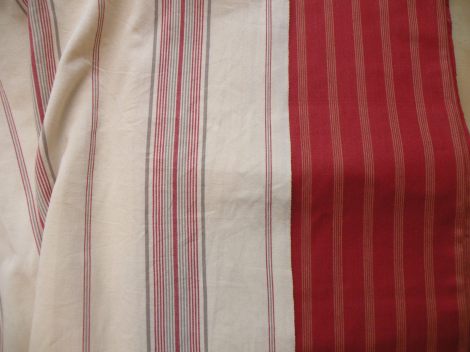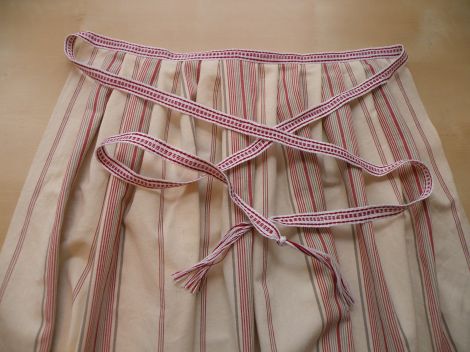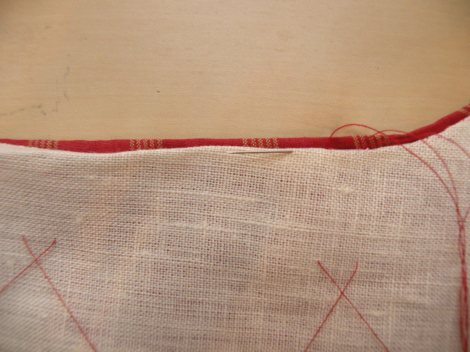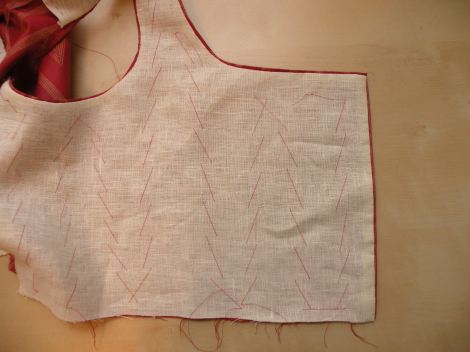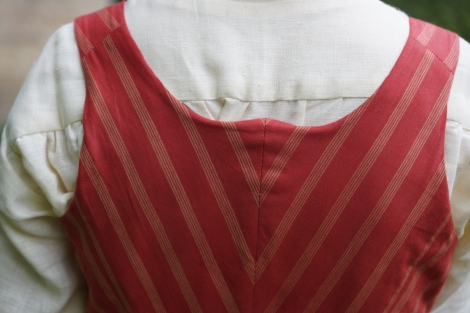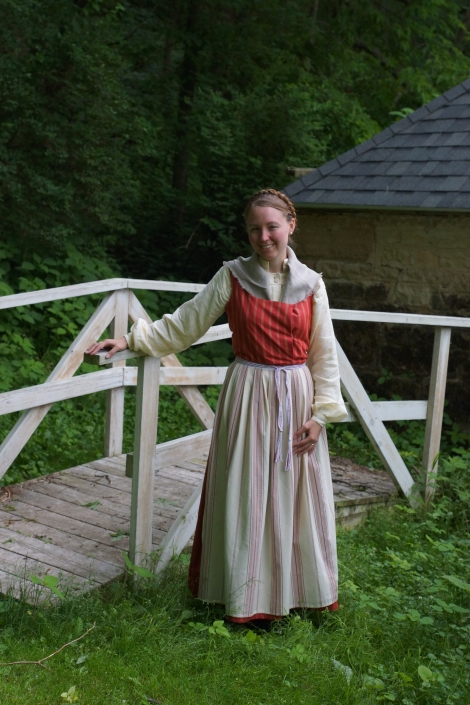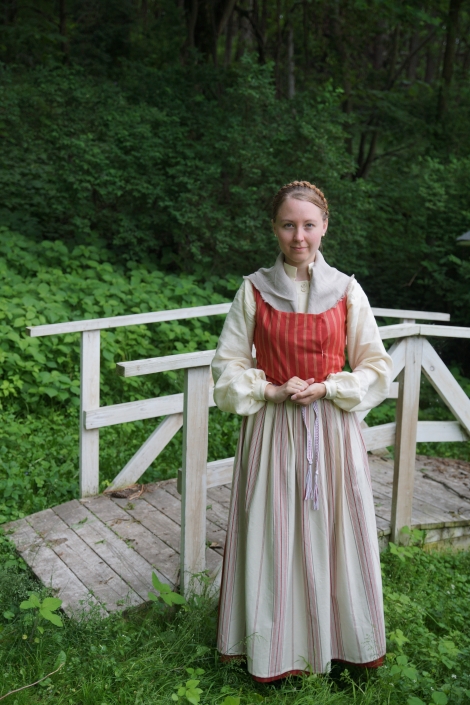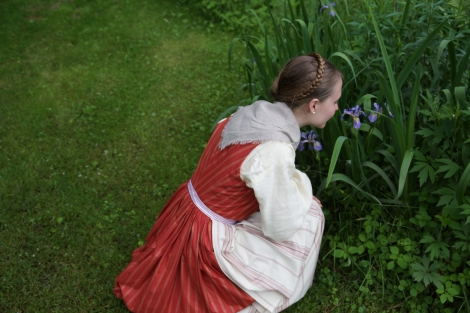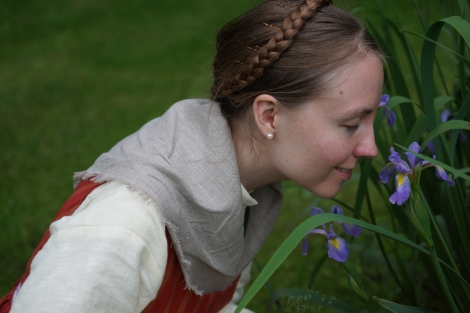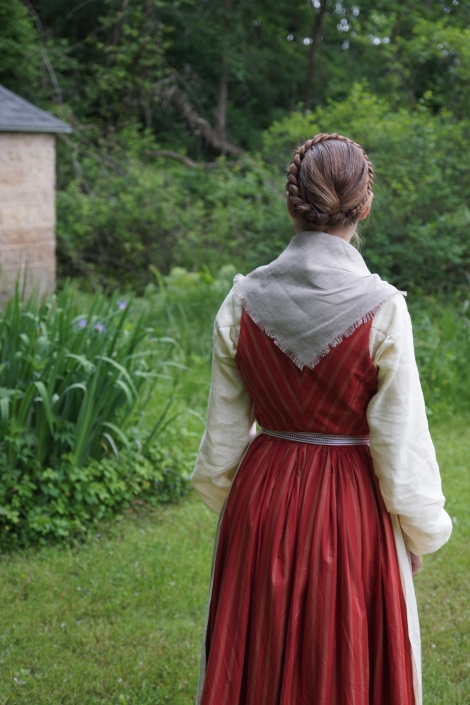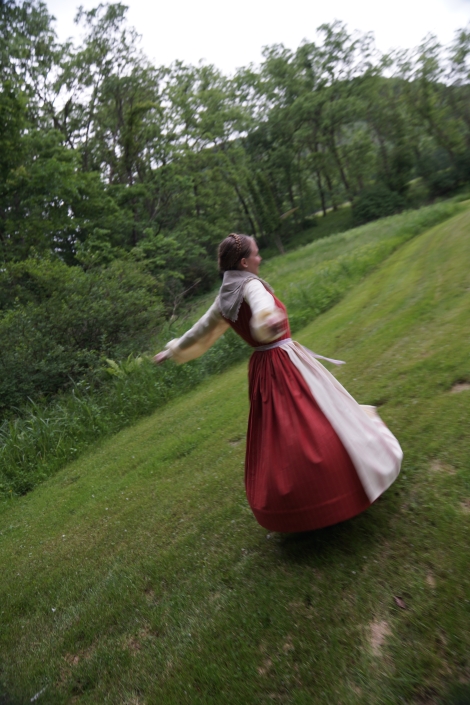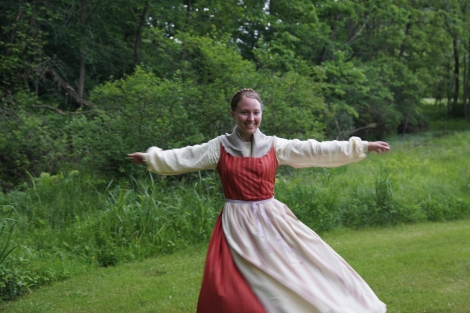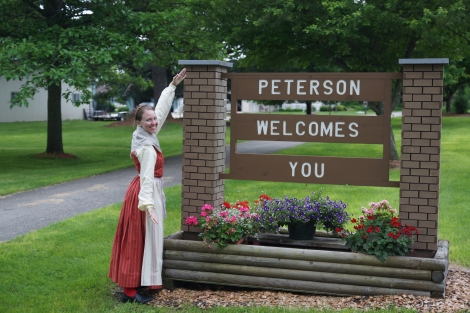Since I moved to Minnesota, I have become a member of three different Scandinavian Dance groups; the Norwegians, the Swedes, and a third group called North Star. We mostly dance over the winter, but we do have a few summer performances as well. I have a costume that I made this past winter that includes a dark blue wool skirt and a red wool bodice, that I wear with the old blouse and särk I made when I was thirteen and made my first folk costume, but that whole costume is just a bit too hot for summer wear. So, I decided to make a costume out of cotton and linen instead.
In the 1890’s, my great-grandma Anna Andersson immigrated to America from the town of Ockelbo, in Gästrikland, Sweden. I decided for my new summer folk costume, I decided to make something similar to what was worn in Gästrikland. I knew that I couldn’t get the exact fabric that was specific to Anna’s town of Ockelbo, or for any town in Gästrikland, for that matter. For starters, they are all striped wool, with very specific stripes. I have been searching for the proper material for the Ockelbo costume for a couple of years with no luck. So, I went to the little local fabric store and got three yards of the red with tan stripes for my dress, and one yard of the white with red stripes for the apron.
The first piece I made was the apron. I recently got a little rigid heddle for Swedish bandweaving from Glimåkra, so I wove a six-foot tie for the apron and pleated the red and white fabric into it.
The band was woven of 16/2 Swedish linen in red and white with a pattern from an old Swedish book on bandweaving I own.
The next thing I made was the livkjol, or as that translates from Swedish, “bodice-skirt”. It’s an old style of dress in which a sleeveless bodice is attached to the skirt. It actually predates the folk costumes that have a bodice separate from the skirt. There are no darts in the bodice to fit it to the waist, rather, the back pieces are cut at a sharp angle to pull the bodice waist in all the way around. It actually does make the bodice fit well.
After I cut the pieces for the bodice and sewed them together, I tacked the linen lining in and sewed the edges down with a hem stitch.
This is very important to prevent the lining from turning to the outside and showing while you are wearing the livkjol.
Once the bodice was done, I sewed together the skirt sections and pleated them to fit into the waistline of the bodice. I cartridge pleated together ninety inches of material for the back half of the skirt!
The back of the bodice has a point in the top center, which is usually hidden by the neckerchief. As near as I can tell, that fashion element must be a leftover from the 1600’s. Of course, I’m not sure, but it’s the best guess I have.
The next piece I made was the neckerchief. I took a large square of unbleached linen, trimmed straight along the threads, and then unraveled the the edges to make a self fringe about 5/8″ deep.
The last piece was the särk, or underdress, which I made out of half-bleached linen. It basically looks like a Victorian nightgown, with long sleeves and a high neck and collar. I used four antique buttons from my great-grandma Anna’s button jar for the collar and cuffs of the särk. It is very long, almost as long as the livkjol, as was traditional.
(It is very important to note that most of the folk costume tradition in Sweden originates from the fashions of the 1830’s and 1840’s, though there are a few elements both from earlier and later in fashion history.)
All of this got done just in time for a dance performance in Peterson, Minnesota! It was a warm day, and the costume was still a little warm to wear, but it was most definitely cooler than wearing my wool costume! (We were dancing on asphalt in the sun– that is never very pleasant!)
After the dance, my husband, Philip, was able to take some lovely photos of my completed costume in the beautiful backyard of the lady who invited us to perform in Peterson.
(That is a very lovely spring house in the background, which has a lovely burbling spring inside it. It was the first time I saw such a thing in real life.)
The last stop in town was to take a picture by the Peterson tity sign, since my great-grandma Anna married a Peterson, so my family is the Peterson clan.
Thanks for reading!
